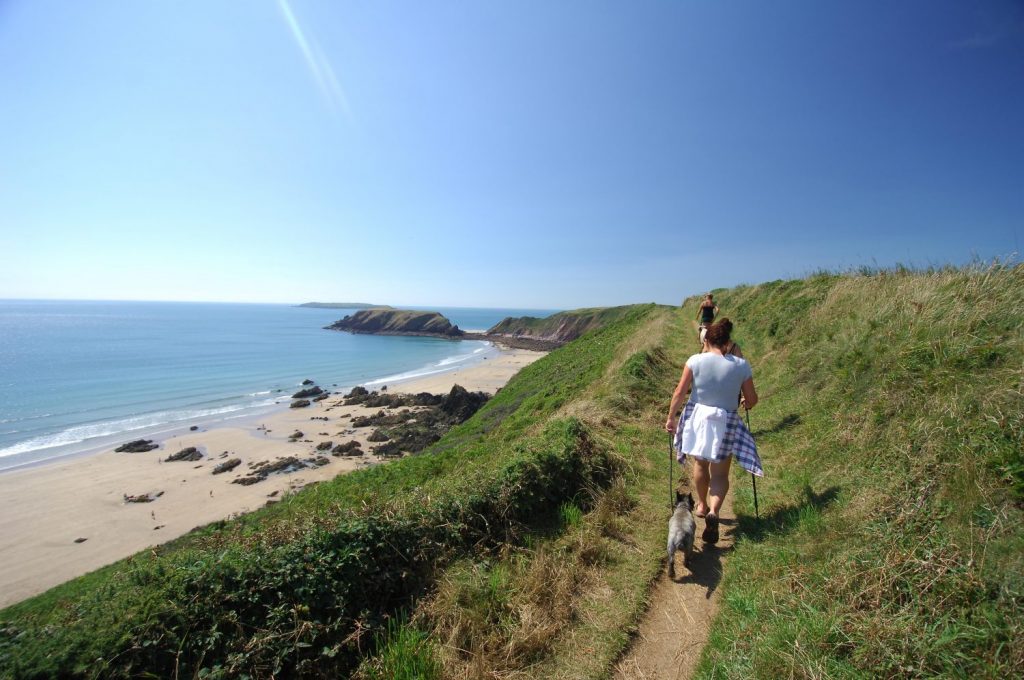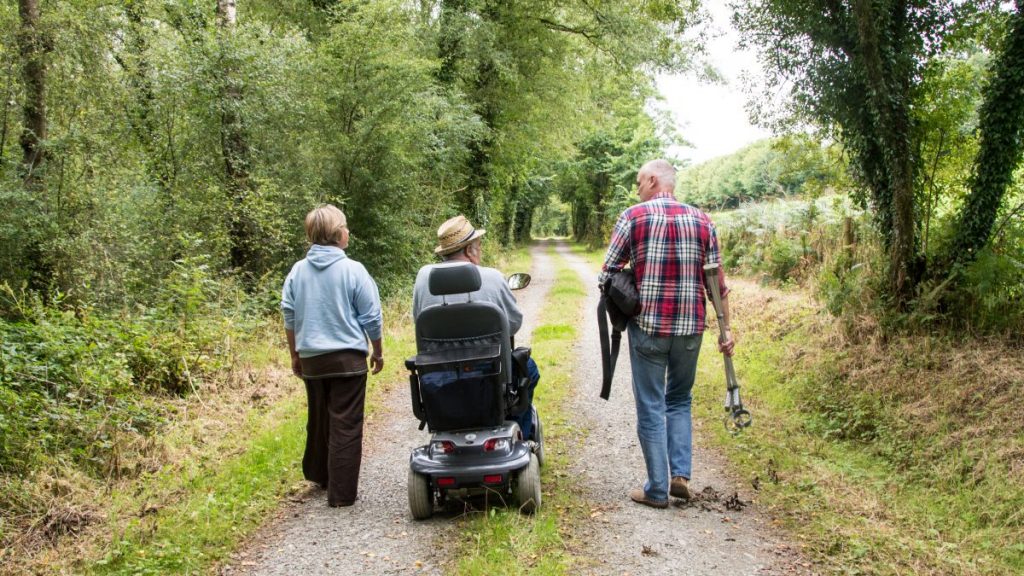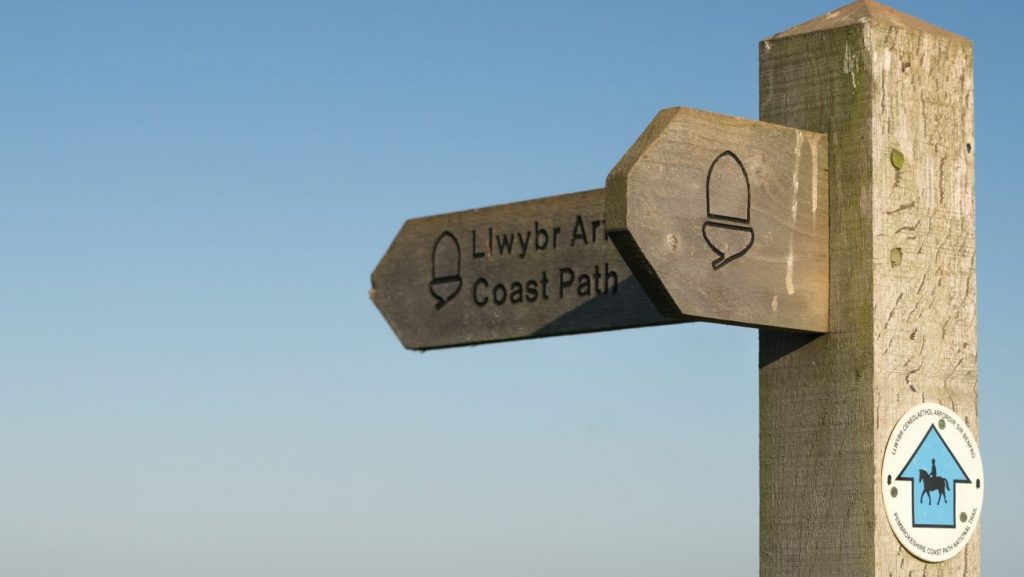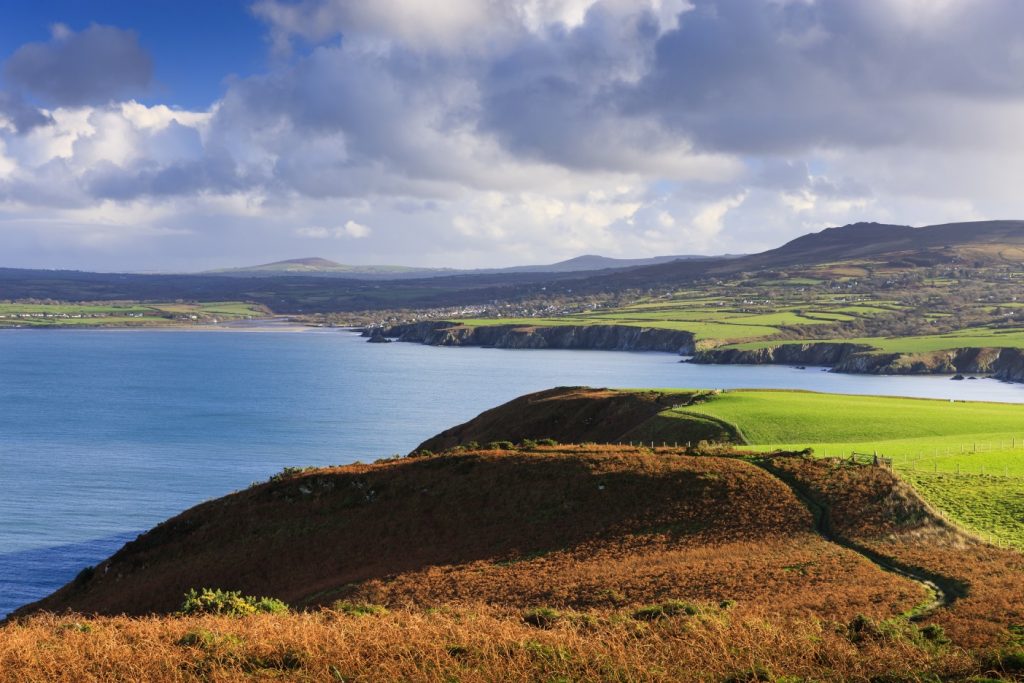DISTANCE/DURATION: 2.9 miles (4.7 km) 1 hour 30 minutes.
PUBLIC TRANSPORT: *Strumble Shuttle 404 (*seasonal, hail & ride).
CHARACTER: Superb coastal views, livestock, can be muddy in places, 275 yds (250 m) minor road walking.
LOOK OUT FOR: Old cottages in small hamlet, seals, coastal flowers in spring, coastal/inland views and Strumble lighthouse.
The lighthouse at Strumble Head is one of the best-known landmarks on Pembrokeshire’s rugged north coast. It stands just off the mainland on the little island Ynys Meicel.
Now fully automatic, the lighthouse was built in 1908 and can be seen by ships up to 30 miles away. Its signature pattern is for the light to flash four times every 15 seconds.
The headland has a dramatic past to match its dramatic looks. It was formed during the Ordovician period by volcanic action when lava erupted under the sea and cooled quickly into pillow shapes.
Strumble Head is a place to watch from. Look up and you are very likely to see the vapour trails of high flying passenger aircraft as Strumble is under a main route to Heathrow Airport.
Birds and animals are on the move too. For birdwatchers the observatory at Strumble is the top sea-watching point in Wales.
Rare seabirds are often spotted as they move around the coast. Dolphins, whales and even basking sharks are also recorded by watchers at the observatory, which was once a World War Two lookout post.
Herring gulls and fulmars breed along the coast as do pairs of choughs. But the main interest for birdwatchers are the seabirds that pass Strumble Head on the way from their breeding colonies on the islands of Ramsey, Skomer and Skokholm to feeding grounds in Cardigan Bay.
One of the most striking birds sometimes seen feeding close to the headland is the gannet. These large white fish hunters have dagger-sharp beaks and long wings, spanning almost two metres (six feet).
They fish in groups and when they spot a shoal go into the attack by folding back their wings and plunging into the sea from 30 metres (100ft) or more above the water.
The National Park Authority has here, and in other locations, introduced ponies to graze the headland to improve the quality of clifftop grassland and heath that are important for wildlife.
As the animals feed they control large plants like bracken that would otherwise force out wildflowers.
Find this walk
Grid ref: SM902405
SAFETY FIRST!
- Take great care when on the Coast Path
- Stay on the path and away from cliff edges
- Wear boots and warm, waterproof clothing
- Take extra care in windy and/or wet conditions
- Always supervise children and dogs
- Leave gates and property as you find them



